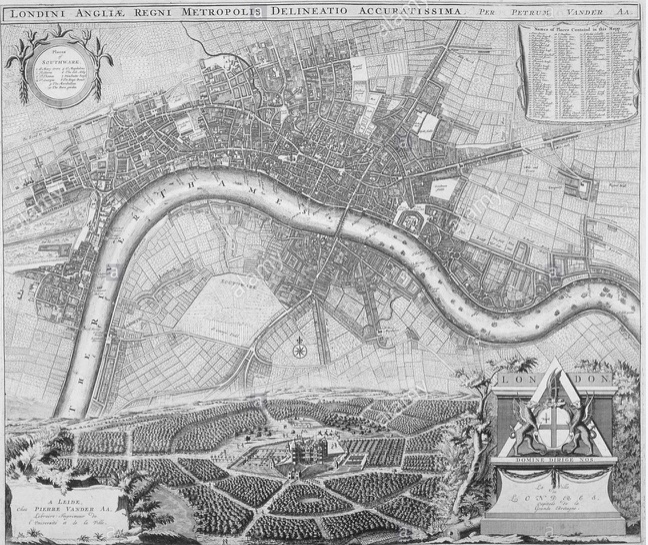
by Sandra Gulland | Jul 5, 2012 | Baroque Explorations, On Research |
London Lives (1690 – 1800) is a wonderful research site. Put in a search term, and lots comes up, mostly quotes from Court records.

For example, because I’m fascinated with early theater right now, I searched “players” and got a vivid snapshot of daily life.
I loved this best—a definition of who would be deemed a Rogue and Vagabond (and thus taken directly to the Justice of the Peace):
THAT Persons pretending themselves to be Patent-Gatherers, or Collectors for Prisons, Goals, or Hospitals, and wandring abroad for that Purpose; all Fencers, Bear-wards, Common-Players of Interludes, Minstrels, Juglers; all Persons pretending to be Gypsies, or wandring in the Habit or Form of counter-feit Egyptians, or pretending to have Skill in Physiognomy, Palmistry, or like crafty Science, or pretending to tell Fortunes, or like phantastical Imaginations, or using any Subtle Craft, or unlawful Games or Plays; all Persons able in Body, who run away, and leave their Wives or Children to the Parish, and, not having where with otherwise to maintain themselves, use Loytering, and refuse to work for the usual and common Wages; and all other idle Persons wandring Abroad and begging (except Soldiers, Mariners or Sea-faring Men licenced under the Hand and Seal of some Justice of Peace, fetting down the Time and Place of Landing, the Place to which, and the Time within which, they are to pass, while they continue in the direct Way and during the Time so limited) Shall be deem’d Rogues and Vagabonds.
Delightful expressions:
“crafty Science”
“phantastical Imaginations”
“Subtle Craft”
Note that licensed soldiers and mariners were allowed to beg.
Do you have a research site you can recommend?
SaveSave
SaveSave
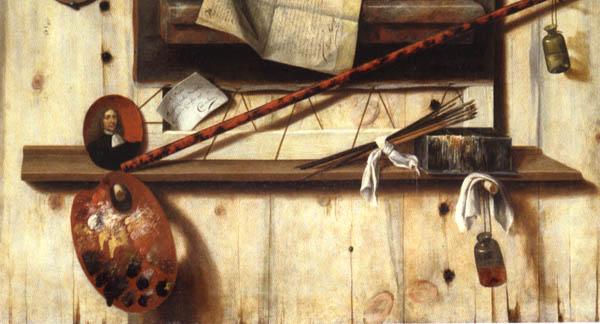
by Sandra Gulland | May 25, 2012 | Baroque Explorations, On Research, The Sun Court Duet |
In researching 17th century maternity wear, I came upon a treasure-trove of information on 17th century daily life in Holland compiled by art historian Kees Kaldenbach. The facts of daily life were deducted in part from the detailed inventories of the Vermeer household and paintings.
Fascinating! Enjoy …
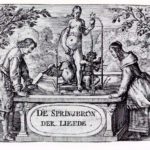
On courtship and making love
Childbirths, midwives, obstetricians
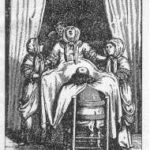
Maternity dress and trousseau
Children’s chair, potty chair
Baby child presented in a crisom
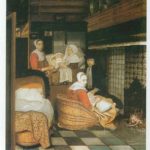
Feeding brest milk/mother’s milk
Vaginal syringe
Fire basket, fire holder
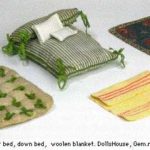
Mattress, bed, blanket. A bed was made of three layers:
- a flat mattress filled with bedstraw, horse hair or sea grass.
- a soft cover filled with feathers, down or “kapok” from silk-cotton trees. This is the layer a person would sleep on.
- sheets and blankets
Every day the sheets and blankets were folded so that the head-end and the foot-end did not touch. The pillows had to be shaken and aired for one hour, to dry the feathers, which tended to lump.
pillows (pillows, ear cushion, sit cushion, tapestry cushion — there were no chairs for the children. They were to use pillows when the adults used the chairs.); blanket,
bed cover: fascinating! The Vermeer household of 3 or 4 adults and 11 children had few blankets. People slept sitting up, two to a bedstead, propped up by pillows. The children slept in wheeled drawers which slid under the bed.
bedsheets, pillow cases, bed linen: 8 pairs of sheets were valued at 48 gilders — the equivalent of a workman’s wage for 24 to 48 days.
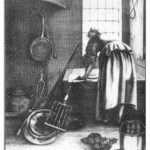
In the cooking kitchen
In the basement, or cellar
In the inner kitchen
Delft markets
Market bucket
Tables: fold-out table, pull-out table, round table, octagonal table, sideboard: This includes instructions on table manners. (“Do not propose to sing at the table oneself ; wait until one is invited repeatedly to do so and keep it short.”)
Trestle table
Foot stove: “One placed an earthenware container within the foot stove and filled it with glowing coals or charcoal. One then placed the feet on it. If a large dress was then lowered over it, or a chamber coat, it warmed both feet and legs.”
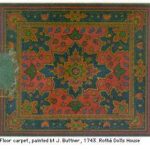
Tapestry table rug: “Only the most wealthy of Dutch households put Turkish rugs on the floor.”
Since I first posted this in 2012, the site moved and none of the links worked. I despaired! However, I emailed Drs Kees Kaldenbach and he kindly provided me with the new sites. Relief! This is one of the most illuminating accounts of daily life in the 17th century. For a historical novelist, it’s a gold-mine.
by Sandra Gulland | May 7, 2008 | Baroque Explorations |
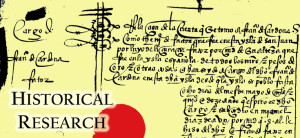
I’m pleased to be a guest blogger on Madam Mayo today, listing my five top historical research sites, and why.
Here is the list:
1. The Medici Archive Project, Document Highlights
This is a site I go to for inspiration, to refresh my delight in all things historical. As the workers who toil in this dusty realm of historical documents put it, every now and then a document comes along that casts a spotlight into that far-away realm and demands to be shared. From this site I’ve read the historical accounts of a rain of frogs, disemboweling kisses, and the sexual crimes committed under cover of the rite of the Tenebrae-— or “The Darkness”-— during Holy Week.
2. The Diary of Samuel Pepys
I enjoy reading Pepys delightful diary on almost a daily basis. It gives me the feeling of life in the 17th century. The annotations are informative and well worth reading as well.
3. BibliOdyssey: Books—Illustrations—Science—History—Visual Materia Obscura—Eclectic Bookart
There are many, many delights in the realm of historical research and coming upon unusual and captivating illustrations is one of them. This amazing blog revels in the unusual, the charming, the beautiful. Not all of the images are historical but most are. I could linger on this site all day.
4. Google Book Search
Google wasn’t the first to put digitized books on-line (the French on-line library Gallica was an early pioneer), but it has quickly become the best in my view, and certainly the easiest to use. If you specify “full view only” in your search, you will be shown books in the public domain, often published some time ago. If you go to Advanced Book Search, you may even specify the time of publication. You may also begin to build up your own on-line library.
I use it for research but I also love to search for old expressions — for example, how someone in the past might have completed the phrase: “as hot as a … “ A Google Book search reveals these tasty possibilities: “as hot as a turn spit,” “as hot as a plum pudding,” “as hot as a melon bed.”
5. Oxford English Dictionary
If I want to know if a particular word or expression was used in the 17th century, this is where I can go to find out. If I want to know what words were used for—say—”pretty” before the 18th century, the OED on-line will tell me (comely, quaint, jolly…). The site, however, is restricted: one must use it through a library that subscribes or pay. I couldn’t do without it.











